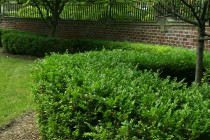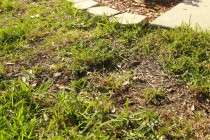Starting a vegetable garden is a fun and fulfilling way to keep your household filled with delicious produce. You will be amazed how quickly your seeds sprout with a little time and effort on your part. Watch this video to watch Lou Manfredini show two ways you can start your vegetable garden.
Depending on where you live, using things such as pellet starters and peat pots, especially if you live in a colder climate, is a great way to start your seeds for a vegetable garden with.
Pellet Seed Starters
- There are little pellets made of peat moss, with a divot in the center. Carefully place a couple of seeds in the disk.
- Once you put seeds in, you do not want to overwater. Instead, use a spray bottle to lightly mist the disks and the seeds.
- Pellet starters can be inside, to avoid chilly mornings in cooler climates. Put the lid on to create a green house effect.
- Place the starter in the sun or use a grow light to get your seeds started.
- When the plant starts to grow, you can pull the disk out and transfer it into your vegetable garden outside.
Pot Seed Starters
- These pot seed starters are made of peat moss and will decompose in the garden itself.
- Take garden soil and add it to the pot.
- Sprinkle the seeds into the pot and then add a thin layer of garden soil on top of the seeds.
- Pot starters can be started inside just like the pellet starters.
- Again, put the starters by a window or use a grow light.
- Pot seed starters will need a little more water than the pellet kind, because it is more robust and has more soil.
- Once the plant starts growing, dig a small hole, place the peat pot directly in the soil and cover with dirt on the sides.
- A good rule of thumb on when you can plant outside is around Mother's Day
- A plus to peat pot starters is the make sure that you space out the vegetables more evenly.
Marking the Garden
- When you open your seeds, slice open the bottom of the package. Then when you plant the seeds, you can slide the seed pack on top of a paint stirring stick and label your vegetables that way. Tape or staple it secure.
Beginner's Plants
- Tomatoes: They are pretty easy to grow and yield a lot of the fruits. They are a great beginner plant. Always read the instructions on the seed pack to get the best results. Make sure soil is loose for tomatoes, spacing them out 6-8inches apart.
- Once the plant starts to sprout about 12-16 inches, use a tomato cage to stabilize the plant. Take the leaves and branches over the horizontal part of the cage for extra support. Once the fruit forms, it gets heavy so the cage is a good addition.
- Jalapeños: If you live in a colder climate, make sure to start them inside. Soil temperature matters for these seeds. Plant about a quarter of an inch deep spaced out 6-8 inches.
- Jalapeños and tomatoes are good plants to put next to each other. They do not compete for resources and they cross pollinate, which is a good thing.
- Cilantro: This herb should also be started indoors, using peat pots. They should be spaced 6-12 inches apart. Before planting outside, make sure the cilantro plant has hardened up a little bit, meaning you can see that the stalk are a little bit stronger. Wind and harsh sun can damage cilantro plants if it is not hardy enough to go outside yet.
- It may be helpful to put a screen up around the cilantro initially, to protect it from some elements until it is stronger.
For more helpful tips and advice, visit a Neighborhood Ace or online at Ace Hardware's Tips & Advice
Published on 3/22/2021.
Always follow manufacturer's instructions before using any product.
These “How-To’s” are provided for informational purposes only. The information contained in Ace Hardware’s “how-to” videos and/or articles is intended to provide general guidelines for projects in and outside of your home. Tools, products, materials, techniques, building codes, local regulations are continually changing. Ace Hardware assumes no responsibility for the accuracy of the information contained herein and disclaims any liability for the omissions, errors or the outcome of any project. It is the responsibility of the viewer to ensure compliance with all applicable laws, rules, codes and regulations for a project and the product being used. The viewer must always take proper safety precautions and exercise caution when taking on any project or using materials of said project. If you have any questions, concerns or doubts in regards to any element of what is displayed in the videos and/or articles, contact a licensed professional.




